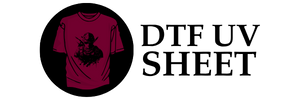DTF printing, or Direct to Film printing, is rapidly emerging as a game-changer in the world of textile printing. This innovative process allows for the high-quality transfer of vivid graphic designs onto a variety of fabrics, enabling both creators and businesses to produce stunning prints with ease. By utilizing specialized DTF supplies and equipment, anyone can tap into the potential of this technology and create lasting fabric designs. Numerous producers are turning to DTF printing due to its efficiency, excellence in print quality, and adaptability across different materials. In this guide, we will delve into the essential supplies and equipment necessary for mastering the DTF printing process, ensuring you’re equipped to bring your creative visions to life.
The realm of Direct to Film printing, often referred to by various names like film transfer printing, is transforming the fabric decoration industry with its remarkable capabilities. This technique enables the vibrant imprinting of intricate artwork directly onto specialty films, which are then heat transferred onto textiles. As more entrepreneurs explore this exciting avenue, understanding the foundational elements such as DTF equipment and techniques becomes paramount. Many aspiring printmakers are discovering how to DTF print with ease, appreciating the technology’s quick turnaround and outstanding results. Throughout this article, we will highlight the must-have tools and materials you will need to embark on your journey into effective film transfer printing.
Understanding the DTF Printing Process
DTF printing, or Direct to Film printing, represents a significant innovation in the textile printing landscape. The process begins with the creation of a design on specialized graphic software. This design is then printed onto a specially-coated film using high-quality inks. Once the design is printed, an adhesive powder is applied, and the film is then heat-pressed onto the desired fabric. This sequence not only ensures vibrant colors but also creates an edge-to-edge print that lasts.
An integral aspect of DTF printing is its compatibility with various fabric types. Whether it’s cotton, polyester, or blends, the DTF method can yield high-quality results that are both visually appealing and durable. The ability to produce intricate designs and a wide range of colors sets this technology apart from traditional printing methods. Understanding this process thoroughly allows users to leverage its full potential, delivering professional results that meet market expectations.
Essential DTF Supplies for Beginners
When diving into DTF printing, having the right supplies is paramount. The most important item is undoubtedly the DTF printer, which utilizes dye or pigment-based inks specifically designed for the DTF printing process. Additionally, high-quality transfer film and adhesives are crucial for achieving prints that adhere well and maintain vibrancy over time. Supplies such as adhesive powder and a reliable heat press machine are also necessary, as they dramatically influence the quality of prints.
Investing in reliable supplies not only affects performance but also impacts cost-effectiveness. Beginners should look for reputable brands such as **Epson** for printers and **TruePix** for transfer film, as these are known for their quality and reliability within the DTF community. Choosing the right supplies leads to successful print outcomes, and as one gains experience and knowledge in using these products, their printing capabilities and confidence will expand.
Choosing the Best DTF Printer
Selecting the best DTF printer is crucial for achieving high-quality prints. The ideal printer should be designed specifically for DTF applications, such as the **Epson L1800**, which is praised for its color accuracy and printing speed. An important aspect to consider is the resolution capability of the printer; a higher DPI (dots per inch) ensures that intricate designs and vibrant colors translate well onto the film.
Another factor to consider is the printer’s compatibility with the DTF inks you’ll be using. Not all printers can handle specialized inks, so choosing a model that supports water-based DTF inks will enhance print quality. Investing in a DTF printer means investing in future business opportunities, as the quality of prints can elevate your product offerings, making them more competitive in the market.
Mastering DTF Inks for Optimal Results
The choice of DTF inks significantly impacts the vibrancy and longevity of your prints. High-quality water-based inks are formulated specifically for DTF processes, ensuring that colors stay vibrant and hold well on various fabrics. Brands such as **Marabu** and **Easiway** have established themselves as leaders in this segment, thanks to their reliable performance and excellent feedback from users.
It is essential to match your printer with appropriate inks, as using incompatible products can lead to poor adherence and fading prints. Furthermore, understanding the different types of DTF inks available, including color and transparency options, helps users choose the best formulations for their projects, ultimately resulting in stunning and durable print outputs.
Transferring Designs with Adhesive Powder
Adhesive powder is a vital supply in the DTF printing process, acting as the medium that allows designs printed on film to bond effectively with the fabric. Proper application is crucial; after the design is printed on film, adhesive powder must be sprinkled while the ink is still wet. The right adhesive ensures that designs are not only applied accurately but will also remain intact after washes.
The choice of adhesive powder is equally important. Using high-quality adhesive ensures lasting results and contributes to the overall durability of the print. Brands vary in composition and performance, so it is advisable for beginners to experiment with a few options to determine which yields the best results for their specific fabric types and usage scenarios.
Exploring the Future of DTF Printing
As the DTF printing landscape evolves, new advancements are continuously enhancing the quality and efficiency of the process. Enhanced ink formulations, for instance, now offer improved adhesion and washability, allowing businesses to produce prints that maintain their integrity over extended periods. The growth of DTF printing technology is also facilitating its adoption across a broader spectrum of industries, from custom apparel to promotional items.
Future developments aim to simplify the DTF printing process further, making it more accessible for small business owners and hobbyists alike. With the rise of community support forums and educational resources, newcomers to DTF printing are now better equipped to navigate the complexities of the process, ensuring they produce high-quality prints that resonate with their target market.
Frequently Asked Questions
What is the DTF printing process and how does it work?
DTF printing, or Direct to Film printing, is a process that transfers high-quality graphics onto fabrics using a specialized printer. The process involves printing vivid designs onto a unique transfer film coated with special inks. Afterward, the film is heat-pressed onto the desired fabric, allowing the ink to bond effectively. This method is praised for its efficiency and the vibrant colors it produces.
What are the essential supplies needed for DTF printing?
To successfully start DTF printing, you will need several key supplies: a dedicated DTF printer, high-quality DTF inks, professional-grade transfer film, adhesive powder, a heat press machine, curing equipment, and graphic design software. Each of these items plays a crucial role in ensuring your prints are vibrant, durable, and professionally finished.
What types of DTF printers are recommended for beginners?
Beginners should consider entry-level models like the Epson L1800 or converted DTG printers specifically designed for DTF tasks. When choosing a printer, ensure it offers high resolution and a good width capacity for various projects, as these features will significantly impact print quality.
How do I choose the best DTF supplies for my printing projects?
Selecting the best DTF supplies involves considering brands known for quality and reliability. Opt for trusted brands for DTF inks, such as Marabu or Easiway, and professional transfer films like DTF Super or TruePix. Furthermore, ensure the adhesive powder and heat press machine fit your specific printing needs for optimal results.
What is the role of adhesive powder in the DTF printing process?
Adhesive powder is essential in the DTF printing process as it ensures that the printed design effectively bonds to the fabric. When heat applied, the powder melts, securing the ink onto the fabric and enhancing print durability and washability. Using high-quality adhesive powder is vital for producing long-lasting designs.
Are there online resources available for learning how to DTF print?
Yes, there are numerous online resources available for learning DTF printing. Websites, forums, and social media groups dedicated to DTF printing provide valuable insights and tips. Engaging with communities can help novices find answers to questions, share experiences, and discover best practices to enhance their DTF printing skills.
| Supplies / Equipment | Description | Recommended Brands / Options |
|---|---|---|
| DTF Printer | Essential for printing designs on transfer film with specific inks. | Epson L1800, Converted DTG Printers |
| DTF Inks | Water-based inks specifically formulated for DTF printing. | Marabu, Easiway |
| Transfer Film | Specially coated film to accept inks properly for transfer. | DTF Super, TruePix, HPRT |
| Adhesive Powder | Ensures designs bond effectively to fabric during heat transfer. | High-quality adhesive powder brands |
| Heat Press Machine | Applies heat and pressure for transferring designs onto fabrics. | Geo Knight, Hotronix |
| Curing Equipment | Secures the design onto the fabric, preventing fading. | Heat Press or Conveyor Dryer |
| Design Software | Used for preparing and creating graphics for DTF printing. | Adobe Illustrator, CorelDRAW |
Summary
DTF printing is an innovative technique transforming the textile industry by providing exceptional transfer quality onto various fabrics. To successfully embark on a DTF printing journey, it is vital to invest in essential supplies such as a dedicated printer, high-quality inks, and reliable transfer films, among others. These components collectively ensure vibrant, durable designs that appeal to consumers. With the growing market and advancements in DTF technology, thorough understanding and participation in the DTF community will facilitate enjoyable experiences and stand-out creations. Join the DTF printing movement today!



